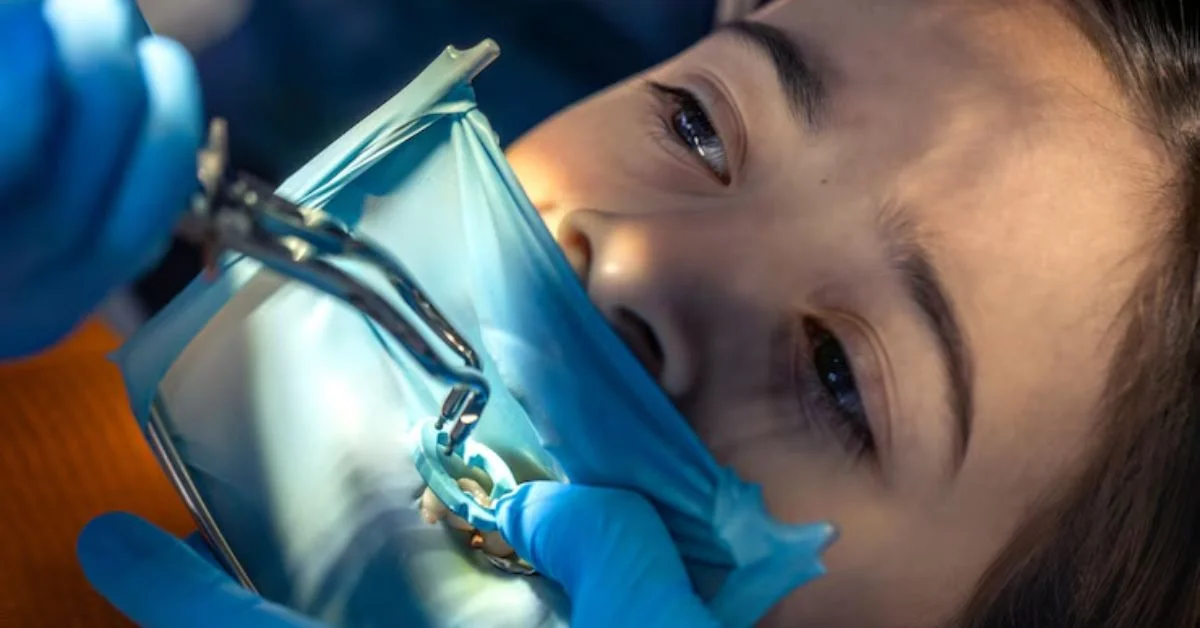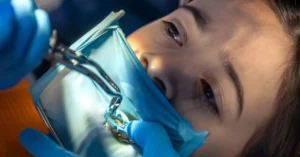Preventive resin restoration (PRR) is a minimally invasive dental treatment that uses composite resin to seal and restore small pits or fissures on teeth, while preserving healthy enamel and stopping decay in its tracks.
The science behind it, how it differs from traditional fillings, step‑by‑step procedure, materials, patient suitability, case studies, and long‑term outcomes. With updates reflecting the latest in materials science and dental best practices, this guide aims to help potential patients and dental professionals understand how PRR is transforming preventive care.
1. The Shift Toward Minimal Intervention Dentistry
Over the past two decades, dental philosophy has moved away from the “drill and fill” model toward minimally invasive dentistry—interventions that preserve natural tooth structure. At the forefront of this evolution is PRR, developed to deal with early-stage decay—white-spot lesions or minor enamel breakdown—before they necessitate full cavities and large restorations.
PRR exemplifies the goal: intervene early, preserve healthy enamel, and avoid the cycle of increasingly large fillings. When combined with patient education and careful monitoring, PRR becomes an essential tool in a modern dentist’s toolkit.
2. Understanding How PRR Works
At the heart of PRR is a simple, yet smart idea:
- Detect early decay in pits or fissures before it extends into dentin.
- Remove only the decayed enamel and demineralized tissue using conservative techniques.
- Seal the treated area with durable resin.
- Monitor over time, checking for staining, leakage, or new decay.
This selectivity maintains healthy structure, reducing sensitivity and strengthening tooth resilience.
3. When Is PRR the Best Option?
PRR is ideal when:
- Preventive sealants aren’t enough
- Fluoride therapy fails to completely remineralize areas
- Lesions are confined to enamel or shallow dentin
- Teeth aren’t heavily restored or damaged
- The patient can commit to follow‑up checks
In contrast, once decay extends beyond superficial layers, more involved restorations—like composite fillings, inlays, or crowns—become necessary.
4. The PRR Procedure: Step by Step
4.1 Diagnosis: Preventive Resin Restoration
- Visual exam with magnification
- Caries detection dyes or fluorescence
- Bitewing X‑rays to assess extent
4.2 Minimal Removal
- Isolate with rubber dam
- Micro-instruments (e.g., spoon excavators) remove only demineralized tissue
4.3 Surface Conditioning
- Application of phosphoric or self‑etch bond
- Thorough rinsing, drying, and bonding agent application
4.4 Resin Restoration: Preventive Resin Restoration
- Apply flowable or microhybrid composite
- Gently shape to replicate anatomy and seal fissures
- Light‑cure until hardened
4.5 Finishing & Polishing
- Refine margins
- Smooth occlusal surface
- Ensure proper bite alignment
4.6 Preventive Recommendations
- Fluoride varnish or gel applied
- Reinforce oral hygiene and diet advice

5. Materials That Make It Work
PRR success relies on:
- Flowable composites with strong adhesion and filler content
- Universal bonding agents compatible with enamel
- High-quality curing lights for consistent polymerization
- Nearby hygiene adjuncts (fluoride, chlorhexidine) to enhance preventive effect
Material technology has become crucial—improved flow, wear resistance, and biocompatibility distinguish modern PRR from earlier, less durable versions.
6. Benefits Beyond the Drill
PRR offers numerous advantages:
- Preserves tooth structure—conserving more enamel
- Reduces post‑op sensitivity
- Shorter chair time than traditional restorations
- Easier to repair or replace in future—no tough removal of old fillings
- Promotes preventive dentist–patient partnership through education
By reinforcing long-term health, PRR enhances trust and encourages proactive oral care.
7. Evidence and Case Reports
Clinical studies show:
- 10‑year survival rates for PRR comparable to conventional fillings in selected cases
- High retention in pediatric populations, reducing need for general anesthesia
- Effective in managing early white‑spot lesions over monitoring alone
Case reports consistently show that when decay is caught early, PRR can defer or even eliminate future invasive treatment.
8. PRR in Pediatric Practice: Preventive Resin Restoration
Children often show decay in molar pits early. PRR provides a therapeutic option between non‑operative management and full fillings. Combined with fluoride varnish and improved home care, studies show PRR can reduce sealant failure and repeat decay.
Parents appreciate that their child undergoes a minimally traumatic procedure—no drilling or anesthesia in mild cases—making PRR a child‑friendly intervention.
9. Adult Applications of PRR
While often associated with pediatric dentistry, PRR also suits adults who:
- Exhibit fissure decay in newly erupted wisdom teeth
- Show minor lesion activity on second molars
- Prefer conservative care over invasive restorations
It is also valuable for restorative dentists managing esthetic zones—like premolars—where aggressive preparation could impair tooth integrity.

10. Limitations and Cautions
PRR is not a cure-all:
- Not suited for large, deep, or cavitated lesions
- Requires monitoring for leakage, staining, or recurrent decay
- Demands patient compliance for long-term success
- Some lesions may mask deeper demineralization, leading to eventual failure
Dentists must use strong judgment to determine when PRR remains effective—and when more traditional care is necessary.
11. Monitoring and Maintenance
PRR demands structured follow‑up:
- 12‑month check with visual/tactile exam and radiographs
- Monitor for new lesions adjacent to treated areas
- Refresh or repair resin if de-bonding or staining occurs
This lifecycle approach extends tooth health while protecting minimal intervention philosophy.
12. Cost Considerations
PRR is generally priced between $80–$200 per tooth—depending on region and clinic—placing it between sealants and traditional fillings. For patients, the smaller cost may be justified by lowered risk and avoidance of future complications.
Conclusion: Preventive Resin Restoration
Preventive resin restoration is more than a trend—it marks a paradigm shift in how dentists challenge early decay: with precision, restraint, and patient partnership. By preserving enamel, promoting minimally invasive care, and reinforcing healthy habits, PRR exemplifies modern dentistry’s goal: to treat less, conserve more, and empower patients for long-term oral health.
If you’re concerned about early signs of decay, PRR offers a smart, science-backed solution that can save tooth structure—and sometimes a drill-free dental appointment. With proper diagnosis, procedural care, and follow-up, PRR helps you meet problems early and preserve your natural smile—with intention and foresight.
FAQs: Preventive Resin Restoration
1. Is PRR suitable for all early cavities?
No. PRR works best for shallow lesions in pits or fissures without collapse—lesions extending into dentin require traditional fillings.
2. How long does a preventive resin last?
With proper maintenance, PRR can last 5–10 years and sometimes longer—but scheduled monitoring and repairs are essential.
3. Does PRR hurt?
Generally not. Minimal local anesthetic may be sufficient due to conservative excavation and shallow intervention.
4. How often should teeth treated with PRR be checked?
Ideally, annually with thorough exams and possibly bitewing radiographs to assess integrity and detect new decay.
5. Can PRR be repaired easily?
Yes. If resin wears or stains, dentists can often re-bond new composite without disturbing healthy surrounding enamel.
For more information, click here.









